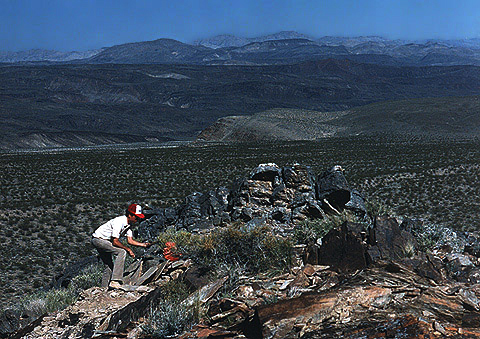
| Looking east from the trilobite locality in the Lower Cambrian Saline Valley Formation. This photograph was taken prior to 1994 (the year the Desert Protection Act became law, thus creating Death Valley National Park and assimilating the popular trilobite site, all in one fell swoop.); a fossil hunter is seen perched precariously on the precipice searches for Early Cambrian trilobites in the slightly metamorphosed shales. The extinct arthropods occur in a seven to ten-foot thick section of fissile, olive-gray shale at the very top of the Saline Valley Formation (the dark brownish bed in the lower foreground, upon which the fossil hunter stands), just below the contact with the overlying Lower Cambrian Mule Spring Limestone--the massive dark blue carbonate ridge just behind the fossil hunter. The Mule Spring yields locally abundant algal nodules called oncolites, oval to circular bodies embedded in the carbonate matrix, precipitated by an extinct species of blue-green algae called Girvanella. |